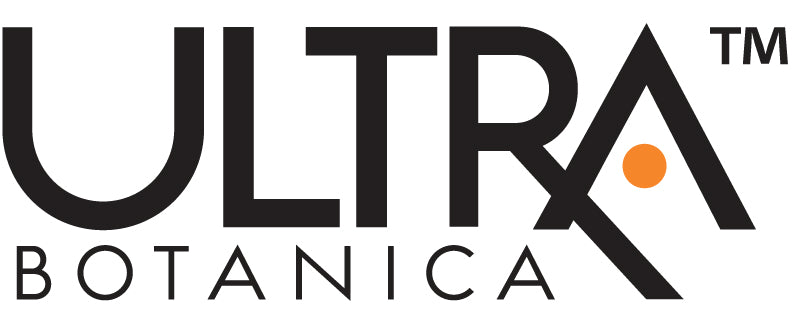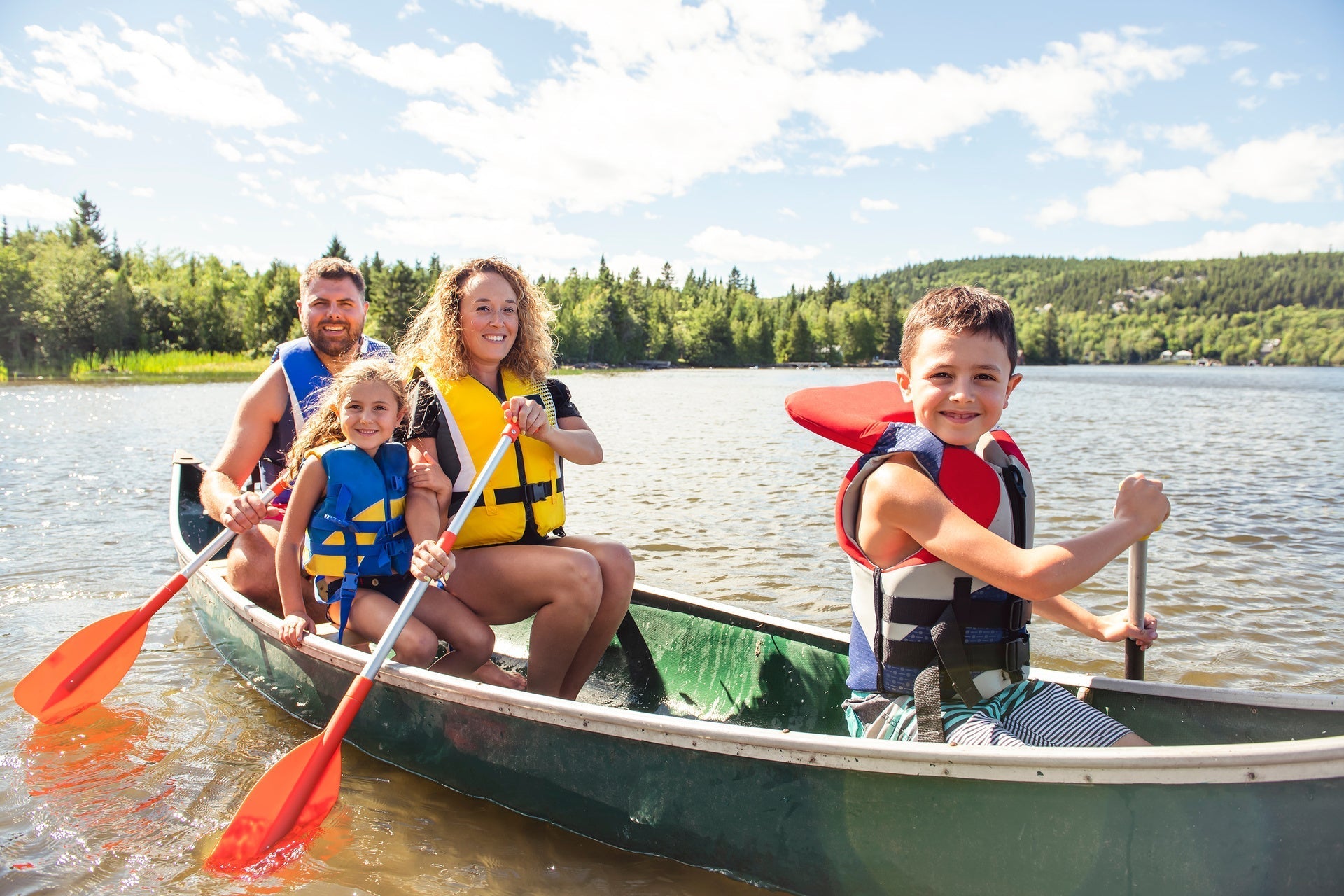Summer brings sun-filled days, outdoor fun, and a welcome sense of freedom. But along with the joys come potential risks—known as summer hazards.
While most people remember basics like sunscreen, other dangers often go unnoticed or underestimated. These summer hazards range from intense sun exposure to activity-related injuries, affecting both physical and mental health.
This guide explores 11 common summer risks, and simple tips to stay safe. With the right knowledge, you can enjoy the season while avoiding the most preventable summer hazards.
1. Dehydration: More Than Just Thirst
Thirst signals late-stage dehydration, which happens when fluid loss exceeds intake, disrupting body functions. Hot weather and activity increase sweat loss and risk. If untreated, dehydration can cause heat exhaustion or stroke.
Young children, older adults, diuretic users, active people, and outdoor workers are most at risk and should monitor hydration closely.
Understanding Dehydration
Your body constantly loses water through breathing, sweating, and urination—even at rest. Without proper hydration, especially in hot, humid conditions, dehydration sets in quickly. Early signs include thirst, dry mouth, fatigue, and dark urine.
If untreated, symptoms worsen to dizziness, headaches, cramps, and rapid heartbeat. Severe dehydration can cause confusion, fainting, kidney problems, or shock, requiring urgent care.
With up to 78% of the body as water, hydration is vital for temperature control, joint health, nutrient transport, and waste removal. And even for brain function. Fluid intake is crucial for avoiding the summer hazards of dehydration.

Preventing Dehydration
Prevent dehydration by drinking fluids regularly—before thirst hits. Water is best; about 64 ounces (8 glasses) daily suits most adults but needs vary. Drink more when active, hot, or sweating.
Electrolyte drinks help during intense activity but watch out for added sugars, which can negate the benefits of the electrolytes. Hydrating foods like watermelon and cucumber also help. Use urine color as a guide—pale yellow is ideal. Take regular water breaks during outdoor activities to prevent heat-related illness, no matter your age.
Treating Mild Dehydration
At early dehydration signs, stop activity, rest in a cool place, and sip water or electrolyte drinks slowly. Avoid sugary or caffeinated drinks. Salty snacks can help replace lost sodium.
Mild cases usually improve with fluids and rest. If symptoms worsen—confusion, fainting, or vomiting—seek immediate medical help. Severe dehydration may need IV fluids.
2. Sunburn: Beyond the Sting
A sunburn isn’t just a short-term irritation—it’s a sign of cellular damage from UV radiation that builds over time. This cumulative sun damage accelerates skin aging and raises your long-term risk of skin cancer.
Severe burns can cause blisters, dehydration, and even infection. In extreme cases, sun damage can trigger sun poisoning, a serious reaction with symptoms like fever, chills, nausea, dizziness, and rash, which may require medical attention.
Sun Protection Strategies
Consistent sun protection is vital to prevent the summer hazards of sunburn and sun poisoning. Give yourself about 15 to 30 minutes of sun exposure to obtain vitamin D. Then apply sunscreen and reapply every two hours—or more after swimming, sweating, or towel drying.
Cover commonly missed spots like ears, neck, scalp, lips, feet, and swimsuit edges. Mineral sunscreens with zinc oxide or titanium dioxide are the safest options. EWG's sunscreen guide can help you choose the right one for you.
Wear lightweight long sleeves, pants, a wide-brimmed hat, and UV-blocking sunglasses for extra protection. Limit sun exposure between 10 a.m. and 4 p.m. to about 30 minutes without sunscreen to avoid burning.
Soothing a Sunburn
If you get sunburned, act quickly to ease symptoms and aid healing to summer skin. Take cool showers or apply compresses. Use pure aloe vera as a topical. Avoid products with alcohol, benzocaine, or lidocaine.
Stay hydrated, and don’t pop blisters (to avoid infection). If blisters break, clean gently and cover with a sterile bandage.
Seek medical care for severe sunburns with widespread blisters, fever, chills, confusion, dehydration, or signs of sun poisoning.

3. Decoding Heat-Related Illness: Exhaustion vs. Stroke
Prolonged heat exposure or physical exertion in high temperatures can overwhelm the body’s cooling system, leading to heat-related illnesses.
These range from mild issues like heat rash and cramps to serious conditions like heat exhaustion and life-threatening heat stroke.
Recognizing the Danger Signs
Heat-related illnesses often progress if the exposure to heat continues without appropriate actions taken. Here's a breakdown of the common conditions:
-
Heat Rash: Red bumps or tiny blisters often in skin folds; harmless but uncomfortable.
-
Heat Cramps: Painful, involuntary muscle spasms from salt and fluid loss during or after activity. Cramps typically affect the calves, thighs, abdomen, or arms. Rest, gentle stretching, and replenishing fluids and electrolytes are usually sufficient treatment.
-
Heat Exhaustion: A serious condition where the body significantly overheats. Symptoms include heavy sweating, pale skin, fatigue, dizziness, nausea, or fainting. Body temp is usually under 104°F. Cool down and rehydrate immediately.
-
Heat Stroke: A life-threatening emergency with core body temp at or above 104°F. Symptoms include hot, dry or sweaty skin, confusion, slurred speech, rapid pulse, seizures, or unconsciousness. Call 911 and begin aggressive cooling right away.
Prevention in Warm Weather
Prevent heat illness by limiting sun exposure in extreme conditions, and staying hydrated. Drink water or unsweetened electrolyte fluids regularly, not just when thirsty. Avoid strenuous activity during peak heat, usually late morning through late afternoon.
Take breaks in the shade or A/C, wear light-weight, loose, light-colored clothing, and never leave people or pets in parked cars, as temps can become deadly fast.
Don’t ignore symptoms, especially during heat waves. Stay alert, act quickly, and follow National Weather Service alerts to stay safe in extreme heat.
Immediate Actions
Prompt action is critical when dealing with the summer hazards of heat illness. At the first signs of heat exhaustion—such as heavy sweating, pale or clammy skin, dizziness, nausea, or fainting—move the person to a cool, shaded place.
Remove excess clothing, apply cool cloths, and offer water or an unsweetened electrolyte drink if they’re fully alert. If symptoms worsen or don’t improve within an hour, seek medical help.
Heat stroke is a life-threatening emergency. Signs include core body temperature over 104°F, red or hot skin, confusion, slurred speech, seizures, or unconsciousness.
Call 911 immediately.
While waiting, move the person to a cooler area and lower their body temperature with cold water, wet cloths, or ice packs on the neck, armpits, and groin. Do not give fluids if the person is confused or unconscious.

4. Buzz Off: Dealing with Bites and Stings
Warm weather brings more time outdoors—and a rise in insect activity. While most bites and stings are mild, some can trigger severe allergic reactions or spread diseases. Knowing your risks helps you take precautions against summer hazards.
Common Culprits
Mosquitoes thrive in warm, humid weather and breed in standing water. Their bites can transmit serious diseases like West Nile virus, Zika, dengue, and encephalitis, making control efforts important.
Bees and wasps are attracted to food, sugary drinks, and floral scents. While bee stings usually leave a stinger, wasps can sting multiple times. Most stings cause mild symptoms, but some can trigger life-threatening allergic reactions (anaphylaxis).
Ticks lurk in tall grass, wooded areas, and even lawns near forests. They attach painlessly and can transmit illnesses like Lyme disease, Rocky Mountain spotted fever, and anaplasmosis.
Protecting Yourself Outdoors
Use EPA-registered insect repellent on exposed skin and clothing when outdoors, especially in mosquito or tick-prone areas. Ingredients like DEET, picaridin, IR3535, and oil of lemon eucalyptus are considered safe and effective when used correctly. Obviously, weigh the benefits vs risks for yourself and your loved ones.
Wear long sleeves, long pants, and closed shoes in grassy or wooded areas, and tuck pants into socks. Treat clothing and gear with permethrin (not directly to skin), which repels ticks and mosquitoes.
After outdoor activities, check yourself, children, and pets for ticks, especially in hidden areas like the scalp, groin, underarms, and behind the knees.
Reduce insect attractants by avoiding strong scents, draining standing water, covering food, mowing grass, and clearing leaf litter.
Treating Bites and Stings
For mosquito bites, wash with soap and water, then apply hydrocortisone cream or take an oral antihistamine to ease itching. Use a cold compress to reduce swelling.
For bee and wasp stings, remove the stinger by scraping with a fingernail or credit card. Don’t pinch. Wash the area, apply a cold compress, and take pain relievers or antihistamines as needed.
For ticks, use fine-tipped tweezers to grasp close to the skin and pull upward steadily without twisting. Clean the area and your hands. Dispose of the tick in alcohol, a sealed bag, or tape... never flush it.
Seek emergency care for signs of anaphylaxis (difficulty breathing, swelling, dizziness, rapid heartbeat). Those who are allergic should carry and know how to use an epinephrine auto-injector.
Watch tick bites for infection or a bull’s-eye rash and consult a doctor if symptoms appear.

5. Water Safety Tips: Preventing Drowning
Swimming in pools, lakes, rivers, and oceans is a fun way to beat the heat—but it comes with risks of serious summer hazards.
Drowning is a leading cause of accidental death, especially in young children, making water safety crucial for all ages and skill levels.
Common causes include lack of supervision, weak swimming skills, not wearing life jackets, getting stuck in rip currents, and cold water shock. Staying alert and using flotation devices can prevent tragedies.
Alcohol plays a major role in many drownings among teens and adults, impairing judgment, coordination, and temperature control. Always avoid alcohol when swimming, boating, or watching others near water.
Understanding Drowning Risks
Drowning can happen quickly and silently, often without the frantic splashing seen in movies. It frequently occurs in home pools during brief lapses in supervision, making constant, focused adult attention the most important safeguard for young children.
Natural waters like lakes, rivers, and oceans pose added summer hazards. Rip currents can pull even incredibly strong swimmers out to sea, while drop-offs, strong currents, submerged objects, and cold water shock increase risk.
Swimmers can run into trouble from fatigue, overestimating their abilities, sudden medical issues, or panic. Awareness and caution are key to staying safe in any water setting.
Key Prevention Measures
Active, focused supervision is vital around water. Always assign a dedicated “Water Watcher”—an adult who stays off phones and avoids alcohol and distractions. Rotate the role every 15–20 minutes for best alertness.
Never leave young children alone near any water... not even for a moment.
Enroll kids and non-swimming adults in certified swim lessons. Secure home pools with four-sided fencing and self-latching gates. Learn CPR and basic rescue skills—they could be lifesaving.
For open water activities like boating or paddle-boarding, everyone should wear properly fitted, Coast Guard-approved life jackets. Don’t rely on inflatable toys.
Always swim with a buddy and check conditions and warnings before entering lakes, rivers, or oceans.
Other Water Worries
Beyond drowning, swimming in contaminated water can lead to recreational water illnesses (RWIs) like diarrhea, rashes, ear infections, and respiratory issues. Showering with soap before and after swimming helps reduce that risk.
In coastal waters, swimmers may face jellyfish stings or “sea lice” (jellyfish larvae), which can cause itchy rashes.
Don’t urinate on stings—it can make them worse. Rinse with seawater, then treat with vinegar or hot water, depending on the jellyfish type.

6. Summer Hazards in the Garden: More Than a Green Thumb
Gardening offers exercise, stress relief, and the joy of nurturing plants, but it comes with risky summer hazards. Common issues include back and knee strain, cuts, sunburn, insect bites, and reactions to poisonous plants.
Practicing good ergonomics and staying aware of environmental hazards can help you garden safely.
Physical Strains
Repetitive gardening tasks like bending, lifting, weeding, and kneeling can strain the back and knees. Use proper body mechanics—lift with your legs, not your back—and vary tasks and positions to reduce overuse. Ergonomic tools can help minimize strain.
Pesky Plants and Critters
Poison ivy, oak, and sumac contain urushiol, an oil that causes an itchy, blistering rash. Learn to identify these plants and wear gloves, long sleeves, and pants in areas where they grow. If exposed, wash skin, clothes, and tools promptly with soap and cool water.
Ticks live in tall grass and garden edges—check yourself after gardening. Rare spider bites, like from black widows or brown recluses, can happen in undisturbed areas, so wear gloves and stay alert.
Bees and wasps may nest in shrubs or soil and be drawn to flowers. Avoid swatting and back away slowly if they approach.
Treating Garden Issues
For minor cuts and scrapes, wash with soap and water, apply antiseptic, and cover with a bandage. For poison plant rashes, use cool compresses, oatmeal baths, or calamine lotion. Avoid scratching to prevent infection. Hydrocortisone or antihistamines can help with itching. See a doctor if the rash becomes severe, widespread, or gets near sensitive areas.
Get medical care for severe stings, spider bites, or symptoms of tick-borne illness. Identify the insect, if possible, but prioritize treatment. Handle pesticides and herbicides carefully to avoid accidental poisoning.
7. On Two Wheels: Biking Safety Essentials
Cycling is a fun, active way to enjoy summer, but it comes with potential summer hazards —especially from falls and traffic. Always wear a properly fitted helmet, it's the best protection against head injuries, the leading cause of cycling-related deaths.
Use lights, reflective gear, and safe riding habits. Follow traffic laws, maintain your bike, and stay alert for a safer ride.

The Helmet Imperative
Research shows helmets cut the risk of head injuries by over 50% and reduce facial injuries. Yet many adults still don’t wear them, despite the proven benefits, although more children use them.
For best protection, a helmet should sit level, cover the forehead (1–2 finger-widths above the eyebrows), have straps that form a “Y” below the ears, and a snug chin strap. Local bike shops can help with fitting.
Adults who wear helmets sets a strong safety example for kids—and it could save your life.
Beyond the Helmet
Helmets protect your head, but full cycling safety takes more. Before each ride, check brakes, tire pressure, and chain. Wear bright clothing and use a white front light and red rear light or reflector in low-light conditions. Consider a blinking light for your helmet.
Follow traffic laws—ride with traffic, signal turns, and stay alert for potholes, car doors, and turning vehicles. Avoid headphones to stay aware of your surroundings.
Intersections are high-risk areas. Make eye contact with drivers and be cautious around turns and blind spots. Ride visibly and defensively.
Common Biking Injuries
Beyond head injuries, common cycling injuries include road rash, cuts, bruises, sprains, strains, and fractures, often to the wrists, elbows, shoulders, hips, or legs.
Cycling gloves protect hands and improve grip.
For minor cuts, clean the area, remove debris, apply antiseptic and bandage. Seek medical care for severe pain, swelling, deformity, or trouble bearing weight.
Basic first aid helps prevent complications and supports faster recovery.
8. Summer Blues: When Sunshine Doesn't Brighten
Seasonal Affective Disorder (SAD) is often linked to winter, but a less common summer-pattern SAD can also impact mental health, triggered by heat, long days, and social pressures.
Unlike winter SAD, which causes fatigue and oversleeping, summer SAD often brings anxiety, restlessness, insomnia, poor appetite, and irritability. Recognizing summer mood shifts is key to managing symptoms.
Understanding Summer SAD
The causes of summer-pattern SAD aren't fully known, but long daylight and heat may disrupt sleep cycles and melatonin, leading to anxiety, restlessness, and insomnia.
Unlike winter SAD, which causes fatigue, summer hazards of SAD often leave people feeling “wired” yet unmotivated, with sleep issues worsening mood and focus. Recognizing these symptoms as real mental health concerns is essential for proper support.
Potential Triggers
Several summer-specific factors can worsen summer SAD symptoms. Heat and humidity can cause physical discomfort and fatigue, while disrupted routines, like kids home from school, can add stress.
Body image concerns tied to seasonal attire and pressure to be social and upbeat can further impact self-esteem and increase feelings of isolation.
Coping Strategies
Managing summer SAD involves self-care, and possibly professional help. Stick to a regular sleep schedule, stay cool with fans, light clothing, and cool showers, and avoid peak heat.
Schedule activities for mornings or evenings and skip social events if overwhelmed. Choose calming activities, and exercise in cool places like gyms or pools. Seek professional help if symptoms persist or affect daily life.

9. Summer Sneezing: Managing Seasonal Allergies
For many, summer brings relief from winter colds but a surge in allergy symptoms like sneezing, itchy eyes, runny noses, and congestion.
Seasonal allergies (hay fever or allergic rhinitis) flare up in warm months. Identifying your triggers and managing symptoms can help you enjoy summer activities with less discomfort.
Identifying Summer Triggers
Common summer allergens include grass and weed pollens (especially ragweed) and mold spores. Outdoor molds thrive in soil, compost, and decaying vegetation, while indoor molds grow in damp areas like basements, bathrooms, and kitchens.
Allergies can worsen with weather shifts. Pollen counts peak on warm, dry, windy days and drop after rain. Mold spores rise with humidity and often spike after wet weather followed by dry conditions.
Minimizing Exposure
To manage seasonal allergies, limit exposure to allergens. Check pollen and mold counts and stay indoors during peak times, usually morning to midday.
Keep windows closed, use air conditioning with a clean HEPA filter, and shower and change clothes after being outside.
Wash bedding in hot water (130°F/54°C) and use a dehumidifier to keep humidity below 50%. Avoid drying laundry outdoors on high pollen days.
Finding Relief
Many effective OTC and prescription allergy medications are available. Some are non-drowsy; others may cause drowsiness.
For a natural option, try UltraAllergy™ . It contains the polyphenol quercetin, which helps stabilize mast cells and prevent their activation—reducing the release of histamine and other chemicals linked to allergy symptoms.
10. Picnic Problems: Avoiding Food Poisoning
Outdoor meals like picnics and barbecues are summer favorites, but they also pose summer hazards—warm temperatures create ideal conditions for harmful bacteria to grow, increasing the risk of food-borne illness.
The Temperature Danger Zone
Understanding the temperature danger zone is crucial for food safety.
Bacteria like Salmonella, E. coli, and Listeria thrive between 40°F and 140°F (4°C–60°C).
Perishable foods—meats, dairy, eggs, cooked grains, and cut fruits or veggies—should not be left in this range for over two hours, or one hour if above 90°F (32°C), as bacteria can double every 20 minutes.
To prevent illness, keep cold foods below 40°F and hot foods above 140°F, following the two-hour (or one-hour) rule before serving.
Safe Food Handling Outdoors
Safe food handling begins with cleanliness. Wash hands with soap and warm water for 20 seconds before prepping, after handling raw meat, and before serving. Use a sanitizer with at least 60% alcohol if soap isn’t available.
Use clean utensils and boards. Never place cooked food on surfaces that touched raw meat without washing first to avoid cross-contamination.
Transport perishables in insulated coolers with ice or gel packs below 40°F. Store raw meat wrapped at the cooler’s bottom to prevent drips.
Keep coolers closed and shaded. Serve cold foods straight from the cooler; keep hot foods hot using warming trays or slow cookers.
Use clean utensils for each dish. Refrigerate or discard perishables left too long in the danger zone—“When in doubt, throw it out.”

Grilling Safety Considerations
Grilling safety goes beyond basic food handling. Use a food thermometer to check meat’s thickest part (avoid bone): 160°F for ground meats, 165°F for poultry, and 145°F (with 3-minute rest) for pork, steaks, roasts, and fish.
Keep the grill away from structures and flammables. Keep kids and pets clear, never leave it unattended, and have a fire extinguisher or baking soda on hand for grease fires.
To reduce harmful compounds (HCAs and PAHs), marinate meats, precook, flip often, and avoid charring.
11. An Unwelcome Summer Surprise: Kidney Stones
Kidney stones, hard mineral deposits that form in the kidneys, can cause severe pain when they move into the ureter. As one of the potential summer hazards , the risk increases with dehydration in hot weather—staying well-hydrated is key to prevention.
The Summer Safety Connection
In summer, heat and activity cause more sweating; without enough fluid replacement, dehydration concentrates urine, allowing crystals to grow or stones to move, triggering pain.
Thus, hot weather worsens kidney stone symptoms, making good hydration especially important in summer—particularly for those with a history of stones.
Recognizing Symptoms
Kidney stone symptoms start suddenly when a stone blocks the ureter, causing sharp, cramping flank pain that may radiate to the abdomen, groin, or genitals. Pain often comes in waves as the stone moves or the ureter spasms.
Other signs include burning urination, blood or cloudy urine, nausea, vomiting, frequent small urinations, and fever if infected. Seek medical care for severe pain or these symptoms.
Prevention Tips
To prevent kidney stones, especially in summer, stay well-hydrated—aim for 2-3 liters (8-12 cups) of mostly water daily, more if active and in hot weather. Keep urine pale yellow or clear.
Depending on your stone type, your doctor may advise adjusting calcium and oxalate intake and increasing citrate from citrus fruits. Consult your healthcare provider before major diet changes.
Conclusion
Summer brings opportunities for fun and relaxation, but awareness of summer hazards helps us enjoy it safely.
Key precautions include staying hydrated, using sun protection, practicing safe food handling, being cautious with water activities, guarding against insect-borne diseases and heat-related issues like kidney stones or summer SAD.
Many risks share simple prevention steps: drink plenty of fluids, seek shade or AC during peak heat, wear sunscreen, hats, sunglasses, and helmets. Stay informed of weather alerts and listen to your body.
Being prepared keeps summer safe and enjoyable. Make smart choices, prepare well, seek medical help if needed, and watch out for loved ones—especially kids and seniors. Here’s to a safe, fun summer! ☀️





Share:
Navigating Toxic Sunscreen: Safer Choices for Skin Health
Protect Your Liver: Essential Strategies for Optimal Health